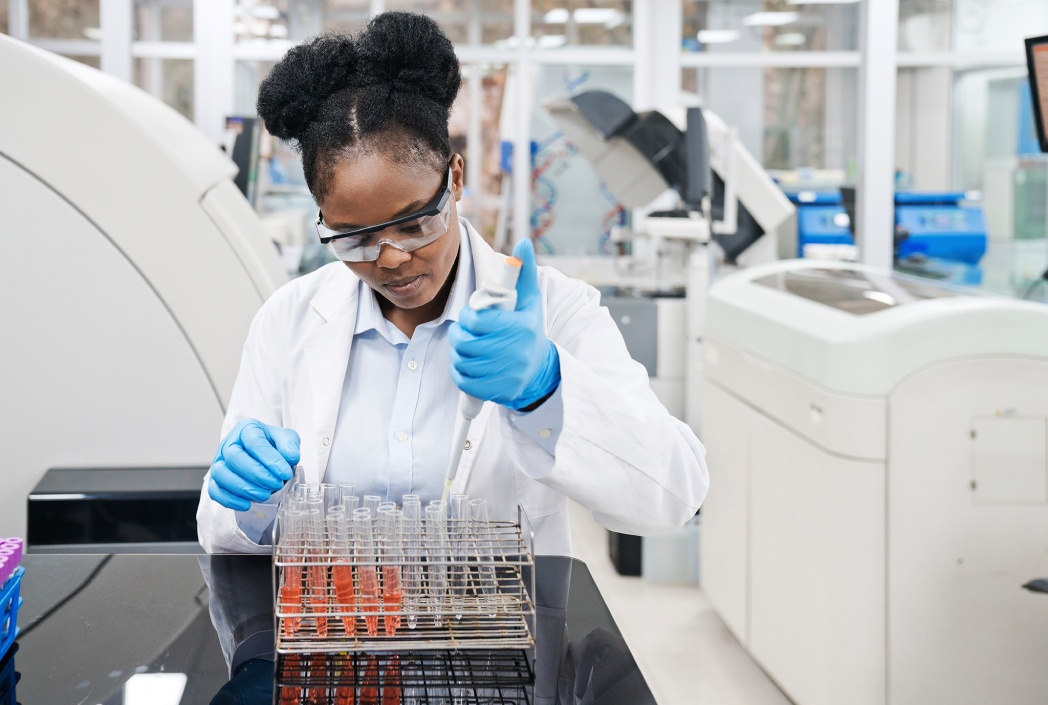Imagine your daughter designing life-saving medical technology, coding solutions for climate change, or engineering rockets to explore the stars. Yet, women make up only 28% of the STEM workforce, highlighting an untapped well of creativity and innovation. By providing early access to engaging STEM education, we can inspire more girls to explore their interests, develop valuable skills, and pursue successful careers in science and technology.
Here’s how K12 is helping girls discover exciting opportunities in STEM (science, technology, engineering, and mathematics).
The Current Landscape of Girls in STEM
Girls thrive in STEM when encouraged and supported but don’t always receive the same reinforcement as their male peers. Classroom dynamics and societal stereotypes can influence confidence levels. With the right opportunities and role models, girls can build their skills and confidently lead in STEM innovation.
Why Visibility Matters
When girls see women succeeding in STEM, they are more likely to envision themselves in similar roles. Research shows that by middle school, many girls can begin to lose confidence in math and science, even when they perform just as well as boys. Positive representation and encouragement can help maintain their interest in STEM and build confidence in their knowledge and skills.
The Workforce Gap
Women are underrepresented in STEM fields, including engineering (21%) and computer science (19%). Programs and initiatives are helping to bridge this gap by creating supportive environments for girls and young women. Many companies also recognize the value of diversity and are actively working to recruit and retain female talent.
A more diverse STEM workforce leads to greater innovation and creativity. When girls have access to the right tools and support, they contribute fresh ideas and unique perspectives to industries that shape our world.
Why Encouraging Girls in STEM Matters
Girls who pursue STEM gain access to opportunities that impact industries, economies, and society. Their contributions lead to groundbreaking innovations, improved problem-solving, and creative solutions for global challenges. Plus, STEM fields tend to have high-paying job options and careers.
There is also a growing demand for skilled professionals in technology and science. Reports predict that by 2030, more than 85 million jobs in STEM fields could go unfilled due to a lack of qualified candidates. Encouraging girls to explore STEM careers can help close this gap and ensure industries have the talent needed to innovate and solve complex problems.
STEM Opportunities for Girls at K12
K12 provides an environment where girls can explore, experiment, and grow in STEM. Through hands-on learning, collaborative clubs, personalized tutoring, and exciting challenges, K12 helps girls build the knowledge and skills they need to succeed.
STEM Curriculum at K12
K12’s STEM curriculum is designed to spark curiosity and keep students engaged through real-world applications of science, technology, engineering, and math. Instead of focusing only on textbooks, students participate in interactive learning exercises like:
- Virtual Labs and Coding Exercises: Middle school students explore computer programming, while high school students tackle advanced engineering or environmental science projects.
- Project-Based Learning: This approach encourages problem-solving and critical thinking.
The curriculum evolves with each grade level, allowing girls to continuously expand their knowledge while developing a problem-solving mindset.
K12 STEM Clubs
K12’s STEM clubs allow girls to connect with peers, explore interests, and experiment with new ideas. These clubs vary by school but are each designed to inspire creativity while reinforcing STEM knowledge through hands-on activities and group projects. Club highlights include:
- Coding Club: Students learn programming languages like Python and create apps, games, or interactive websites.
- Robotics Club: Girls design and program robots for competitions, combining creativity, engineering, and problem-solving.
- Mathletes Club: This club makes math fun and strategic through puzzles, competitions, and challenges.
K12 STEM Challenges and Competitions
Learning is more impactful when students can apply their knowledge in real-world scenarios. K12 offers challenges and competitions that encourage students to think critically, collaborate, and innovate. Opportunities include:
- STEM Design Challenges: Girls work on design-focused projects, like building sustainable solutions or creating innovative prototypes.
- Robotics Competitions: Teams design and program robots to complete tasks, promoting collaboration and technical mastery.
- Math and Science Fairs: These events allow girls to showcase their projects and combine creativity and research to solve scientific or mathematical problems.
One example is Team Hello Kitty, an all-girl robotics team from the K12 Robotics League that represented the U.S. at the 2024 World Robot Olympiad in Puerto Rico. The team showcased its skills in coding, engineering, and teamwork.
Many competitions are open to students across the country, too, not just those enrolled at K12-powered schools.
STEM Tutoring From K12
K12’s live online tutoring provides personalized support tailored to each student’s needs. Whether mastering advanced calculus, solving coding challenges, or preparing for competitions, K12’s tutors can help girls build confidence and deepen their understanding. Benefits of K12’s tutoring include:
- One-to-One Sessions: Personalized help on challenging topics or advanced concepts.
- Preparation for Competitions and Projects: Ensures girls are well-prepared and confident in their skills.
Please note that K12 tutoring does have a cost per session. We do our best to keep this offering affordable for students and families.
How Parents, Educators, and Mentors Can Help
Behind every successful girl in STEM is a network of supporters who believe in her potential. Parents, educators, and mentors play a vital role in nurturing curiosity, building confidence, and inspiring girls to pursue their dreams. At K12, we understand that empowering the next generation of innovators begins at home and in the classroom.
Here are ways to help inspire the next generation of women in STEM:
- Make Playtime STEM-Friendly: Encourage creativity and problem-solving with books, toys, games, and activities that spark interest in science, technology, engineering, and math.
- Challenge Stereotypes: Empower girls by reinforcing that STEM is for everyone, regardless of gender or any other differences.
- Connect STEM to Real Life: Show how STEM impacts things they already care about, from designing video games to protecting the environment.
- Share Stories of Women in STEM: Role models inspire girls to dream big. Highlighting female scientists, engineers, and innovators shows what’s possible. There are books, shows, and more out there to help do this.
- Encourage Hands-On Experiences: Activities like building a robot, coding a game, or experimenting with science kits help girls see themselves as inventors and problem-solvers.
- Celebrate Every Achievement: Every step forward is progress. Celebrate their successes and support them through challenges.
Supporting girls in STEM while they’re young can make a difference. When girls know they have people in their corner, they’re more likely to take risks, tackle challenges, and stick with STEM as they grow.
Join K12 in Building a Future of STEM Innovation for Girls
Empowering girls in STEM creates a future shaped by diverse ideas and groundbreaking innovations. At K12, we are committed to this mission by offering interactive programs and opportunities that help girls and all students succeed. Through our STEM curriculum, live online tutoring, and supportive community, students gain the knowledge, skills, and confidence they need to thrive in science, technology, engineering, and math.
Ready to inspire the next generation of scientists, engineers, and creative thinkers? Find an accredited online school near you and join us in empowering girls to explore, innovate, and shape the future.







